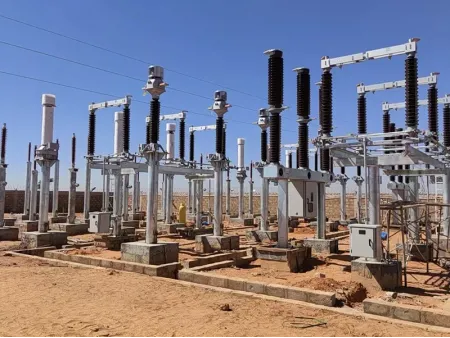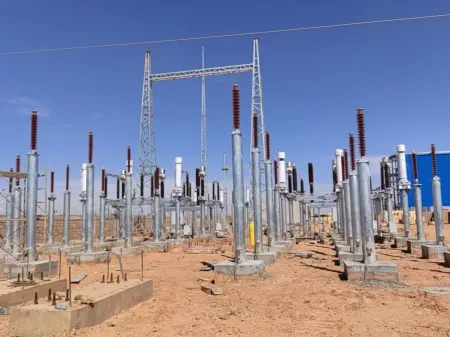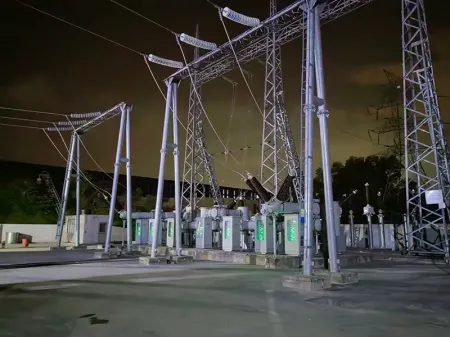Hydropower Substations
To transmit electrical energy generated by a hydropower plant over long distances, the voltage must be stepped up to a high voltage level. Near the point of use, the voltage is stepped down as needed to ensure safe and efficient distribution. This process of voltage transformation is carried out by substations, whose main equipment includes switchgear and transformers.
Substations also incorporate advanced grid resilience technologies that enable the system to withstand extreme weather conditions. This enhanced resilience reduces downtime and helps safeguard public safety.
In addition, hydropower substations are highly beneficial for power generation, offering efficient power transmission and distribution, voltage regulation, grid stability with minimized financial losses.
- Voltage Level: 66 KV
- Transformers: 2 units × 40000 KVA
- Voltage Level: 110 KV
- Transformers: 2 units × 50000 KVA
- Voltage Level: 66 KV
- Transformers: 2 units × 40000 KVA
- Voltage Level: 66 KV
- Transformer: 1 unit × 6300 KVA
Contract signed in July 2024, and all equipment was delivered by April 2025.
- Voltage Level: 220 KV
- Transformer: 1 unit × 120 MVA
What determines the size of a substation?
The size of a substation is determined by several factors:
- Voltage level, usually indicated by the rated high-voltage side of transformers (e.g., 35 KV, 66 KV, 110 KV, 132 KV, 220 KV, 330 KV, 500 KV, 750 KV, or even up to 1000 KV).
- Total transformer capacity, which refers to the combined capacity of all the main transformers within the substation.
- Number of outgoing feeders at each voltage level, representing the distribution circuits from the substation.
How are the primary electrical components of power plants and substations configured?
The primary electrical equipment in power plants and substations includes:
- Generators
- Transformers
- Circuit breakers
- Disconnect switches
- Fuses
- Instrument transformers
- Arc suppression coils
- Reactors
- Power capacitors
- Synchronous condensers
- Insulators
- Current-carrying conductors
- Lightning arresters
- Grounding systems.
What are the main components of substation construction?
Key components include:
- Transformers
- Circuit breakers and switchgear
- Busbar control and protection devices
- Supporting structures and foundations.
What are the different types of substation?
- Transmission substations (step up the voltage to facilitate long-distance power transmission through the grid)
- Distribution substations (step down the voltage to levels suitable for final distribution to consumers)
- Collector substations (collect electrical power from various sources or multiple power plants)
- Switching substations (help control the flow of current and enable switching between different power sources to maintain system reliability).
What is the role of gantry in substation?
The gantry is a critical structural component in substations, designed to support and organize overhead conductors. It ensures that electrical lines maintain proper clearance from each other, preventing clashes and electrical faults.
Why is substation construction important?
Substations play a vital role in regulating voltage and distributing electrical power, which helps reduce outages and ensures seamless power delivery to consumers.
Substations also incorporate advanced grid resilience technologies that enable the system to withstand extreme weather conditions. This enhanced resilience reduces downtime, prevents economic losses, and helps safeguard public safety.
What are the benefits of substations in power distribution?
The benefits of substations in power distribution are the following:
- Efficient power transmission and distribution: Substations ensure that voltage levels are optimized for both long-distance transmission
- Voltage regulation and control: Substations maintain stable voltage levels across the entire power grid, helping to prevent fluctuations
- Grid stability: By regulating current flow and isolating faults, substations enhance the overall reliability of the electrical system
- Minimized transmission losses: Through appropriate voltage transformation, substations reduce energy losses during transmission




